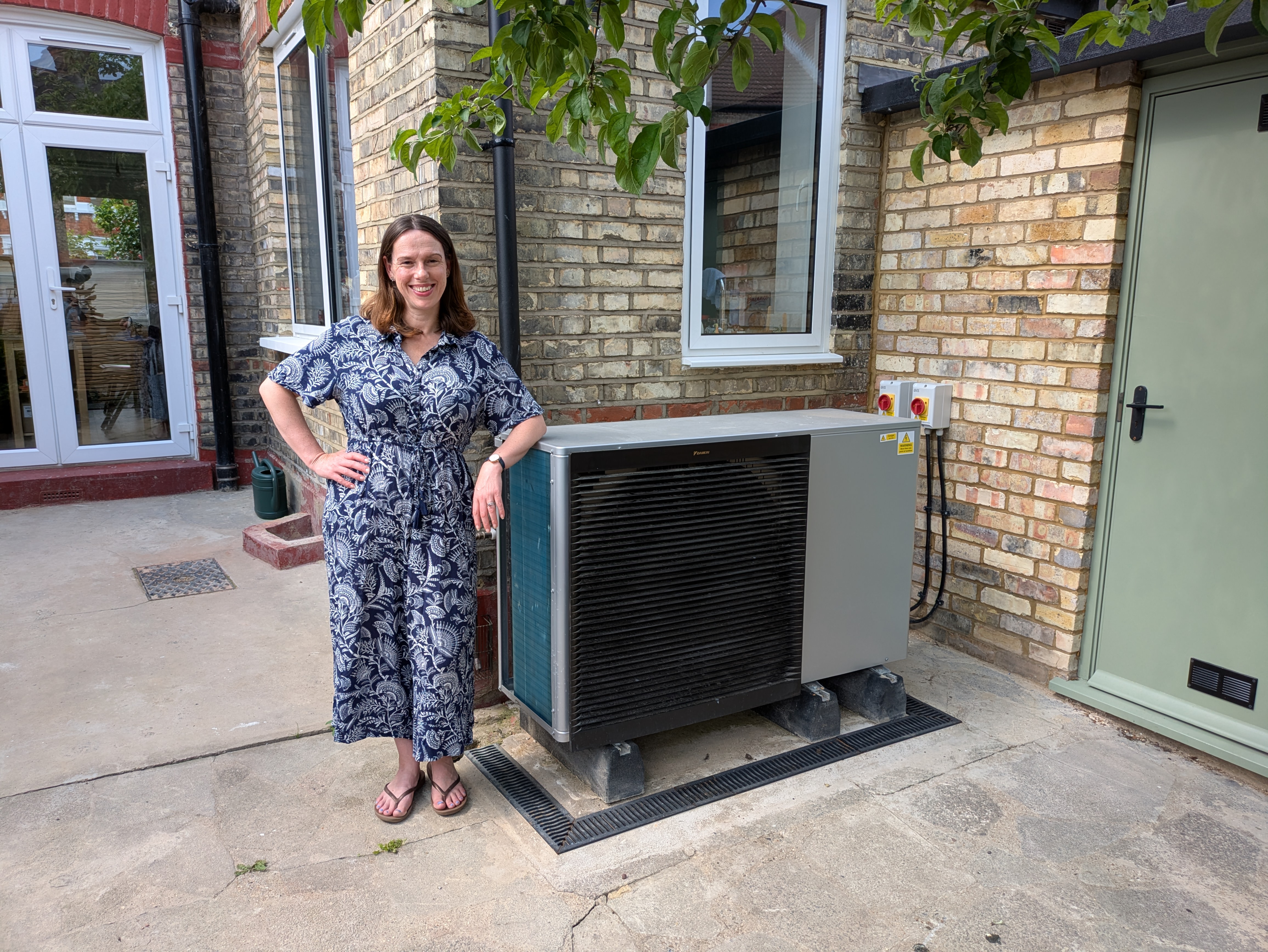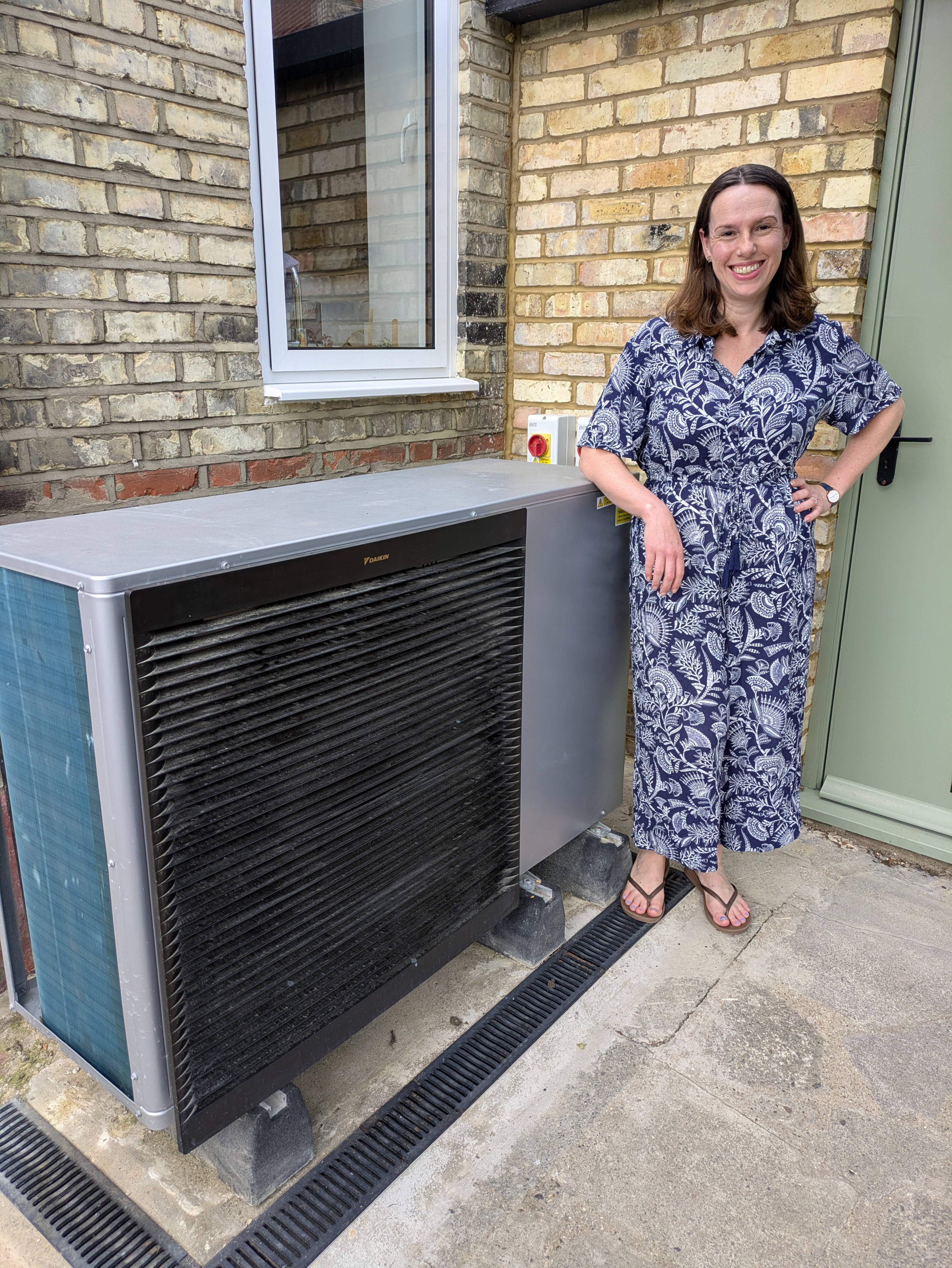‘I installed a heat pump in my home – here are five things I’ve learnt’
From the size and noise of a heat pump to how much it costs to run one, Ruth Emery reveals what she’s learnt after installing one in her home six months ago


Six months ago, my husband and I welcomed a new addition to our home. Well, to our garden to be precise. A Daikin air source heat pump now sits below the kitchen window, with its accompanying hot water cylinder standing tall in a small, brick outhouse nearby.
It’s an important addition, as it provides heating and hot water to our Edwardian terraced home in north London, replacing an ancient boiler.
We qualified for the £7,500 government grant, part of the Boiler Upgrade Scheme (BUS), so the net cost for the heat pump was about £6,000, which we’re paying in interest-free monthly instalments.
MoneyWeek
Subscribe to MoneyWeek today and get your first six magazine issues absolutely FREE

Sign up to Money Morning
Don't miss the latest investment and personal finances news, market analysis, plus money-saving tips with our free twice-daily newsletter
Don't miss the latest investment and personal finances news, market analysis, plus money-saving tips with our free twice-daily newsletter
The heat pump was a small part of a big renovation, but many people thought it was the most interesting bit – although for us, installing it was the most stressful part.
What does a heat pump look like, what does it sound like, how big is it, will it keep you warm in the winter, will it really cut your energy bills?... These were just some of the questions asked by friends and family. To be honest, our architect and builders were also curious.
While electric vehicles are now a common sight on UK roads, heat pumps are still a lesser-spotted garden feature. In 2023, only 1% of UK homes had a heat pump.
The number is rising each month, with more and more homeowners applying for the BUS grant. A total of 4,028 applications were received in March 2025, up 88% on the same month last year, according to the Department for Energy Security and Net Zero.
The BUS also includes £7,500 grants for ground source heat pumps and £5,000 grants for biomass boilers, although they’re even rarer than air source heat pumps.
The total number of heat pump sales in the UK, including those not supported by government subsidies, was just under 100,000 last year, according to the Heat Pump Association.
However, this is well below the government's target of 600,000 a year by 2028.
A recent poll from Heating Trades Network UK suggests that about half of households would be happy to ditch their gas boiler in favour of a heat pump if it cut their energy bills.
If you’re thinking of installing one, here are some lessons I’ve learnt from having a six-month old heat pump.
1. It’s difficult fitting a heat pump in an old property, but not impossible
Many heat pumps are installed in new-build properties, which I imagine is fairly simple. But to get the £7,500 grant, you’ll need to replace a fossil fuel heating system – like a gas boiler – which is more tricky.
The first thing to do is to book a survey, which you can get from an energy supplier like British Gas, EDF or Octopus Energy. I’d recommend having several done to get different quotes. You can also chat about what size heat pump they advise, whether you’ll need new radiators and so on.
We went with CB Heating, which is owned by EDF. As we were renovating our entire house, it perhaps made the installation easier. However, it did mean we had to coordinate CB Heating with our builders and plumber, as well as our energy supplier Octopus.
Issues we faced included: a hiccup with the way the electricity meter had to be changed before the heat pump could be installed (resulting in lots of chasing by us), having to pay an extra £1,000 for large water pipe connectors (which wasn’t obvious in the heat pump survey), and the hot water cylinder headache (should it go in the loft, or the kitchen? How far can it be from the heat pump? Our architect made numerous plans to incorporate where it could go. It ended up in the outhouse.)
2. Heat pumps are not noisy – but they are big
If I had a pound for every time someone asked me if our heat pump was noisy, I might have paid off its cost by now!
No, it’s not noisy. It’s right next to the kitchen window and we’ve never heard it in the house. Outside, you hear a low whirring sound from time to time. Like the white noise from a fridge or gas boiler.
The size is bigger than I expected though. Our model is 1.4 metres long, by 46cm deep, and 87cm tall. The heat pump would look less imposing if it could fit flush to the kitchen wall, but you have to have space all around it for the airflow.
I’ve got used to it, and I’m pleased we chose that particular spot for it – so do give the heat pump location some thought.

Ruth Emery explained her heat pump can't fit flush to the wall as there must be space for airflow
3. You will have arguments trying to work out how to use your heat pump
Heat pumps are completely different to gas boilers. Installing one is only half the battle, now you have to work out how it works.
The conventional wisdom to save on energy bills is to turn radiators off in rooms you’re not using, and switch the heating off when you go out. But with heat pumps, the idea is you keep it at a steady temperature all the time, because if it’s turned off, it has to work much harder to warm the house up again.
This has caused a lot of arguments between me and my husband, in terms of getting the heating just right, and also obsessing over our energy usage (and bills) on the Octopus app.
I recommend joining the Heat Pumps UK Facebook group for support and tips from heat pump owners and experts (and to settle any arguments).
4. Spend time researching energy tariffs – there are lots to choose from
So, onto the actual cost of running a heat pump. Most energy suppliers offer a tariff specifically for heat pump owners. We’re on the Octopus Cosy tariff, which has three unit prices for electricity depending on the time of day.
The idea is the heat pump turns on at the cheapest times (for us, that’s 4am-7am, 1pm-4pm and 10pm-midnight). And the radiators will stay warm throughout the day. We also put the washing machine and dishwasher on during these cheap periods.
You can shop around for a tariff that suits you best, regardless of which provider fitted your heat pump. For example, Scottish Power has a Heat Pump Saver tariff with a low-cost rate between 11am and 4pm.
5. It’s too early to say whether I’ll save money on my energy bills
We are, thankfully, much warmer in our house now we’ve got better radiators and ditched the ancient and inefficient boiler.
However, at the moment it doesn’t look like we’re saving money. For example, our February energy bill was about £160 for both this year and last year (when we still had the gas boiler).
Studies show that a heat pump should save you anywhere from £100 a year to more than £500. It makes me nervous that we’re not seeing any savings yet, but as I’ve mentioned, we’re still getting used to our six-month old heat pump baby, and hopefully we will become smarter in how we operate it and take advantage of the Cosy tariff.
In the meantime, I might ask the Facebook group for any more energy-saving tips that I’ve missed, and put a note in my diary to compare the annual cost when our heat pump turns one.
Get the latest financial news, insights and expert analysis from our award-winning MoneyWeek team, to help you understand what really matters when it comes to your finances.

Ruth is an award-winning financial journalist with more than 15 years' experience of working on national newspapers, websites and specialist magazines.
She is passionate about helping people feel more confident about their finances. She was previously editor of Times Money Mentor, and prior to that was deputy Money editor at The Sunday Times.
A multi-award winning journalist, Ruth started her career on a pensions magazine at the FT Group, and has also worked at Money Observer and Money Advice Service.
Outside of work, she is a mum to two young children, while also serving as a magistrate and an NHS volunteer.
-
 ‘Why I have ditched my Help to Buy ISA for cash savings and the stock market’
‘Why I have ditched my Help to Buy ISA for cash savings and the stock market’Without the 25% bonus, my Help to Buy ISA is effectively redundant, says MoneyWeek writer Sam Walker.
-
 Is your inheritance tax allowance cut if you sell to downsize or sell your home to pay for care?
Is your inheritance tax allowance cut if you sell to downsize or sell your home to pay for care?Downsizing relief is a little-known benefit that could save your loved ones tens of thousands of pounds in inheritance tax after you’ve died.